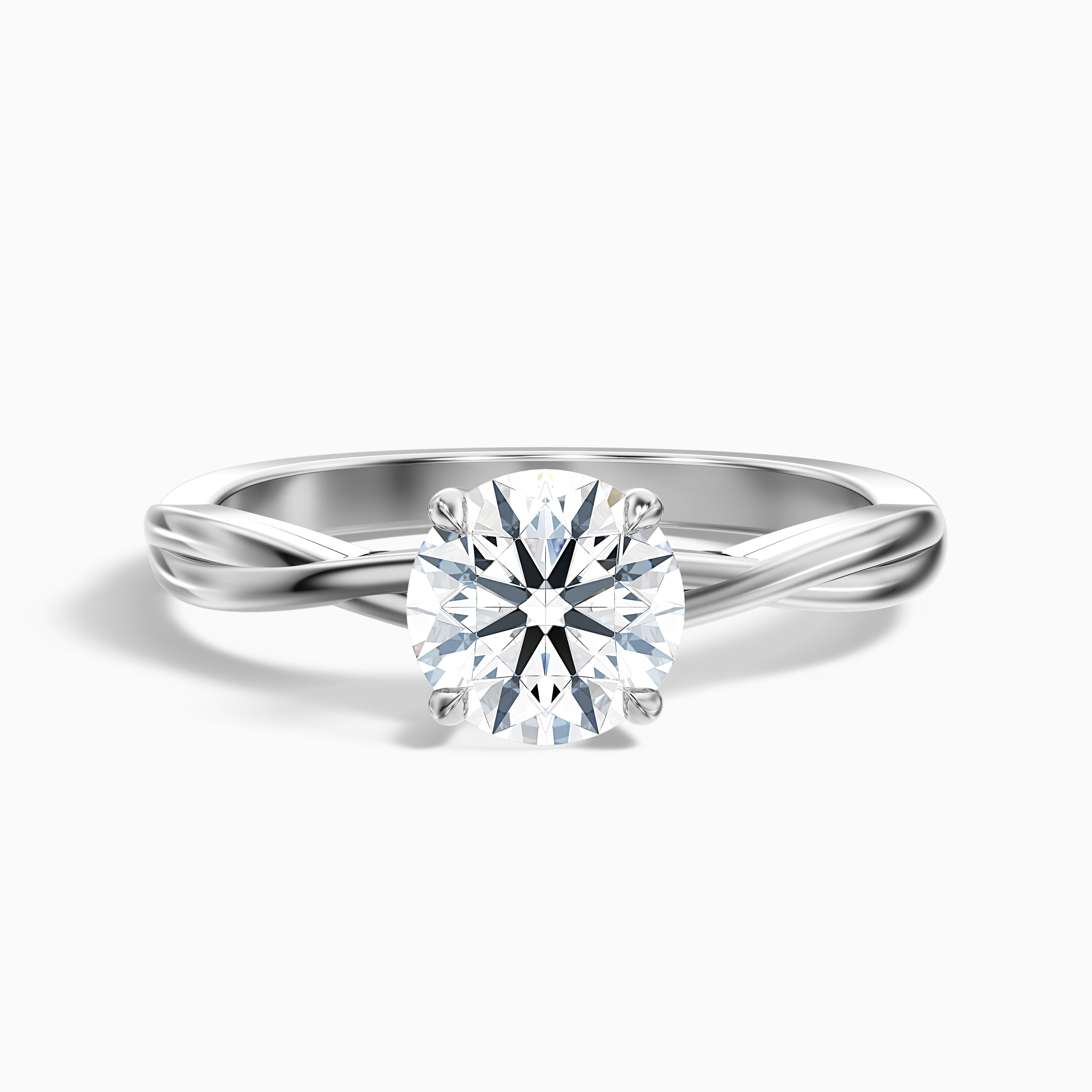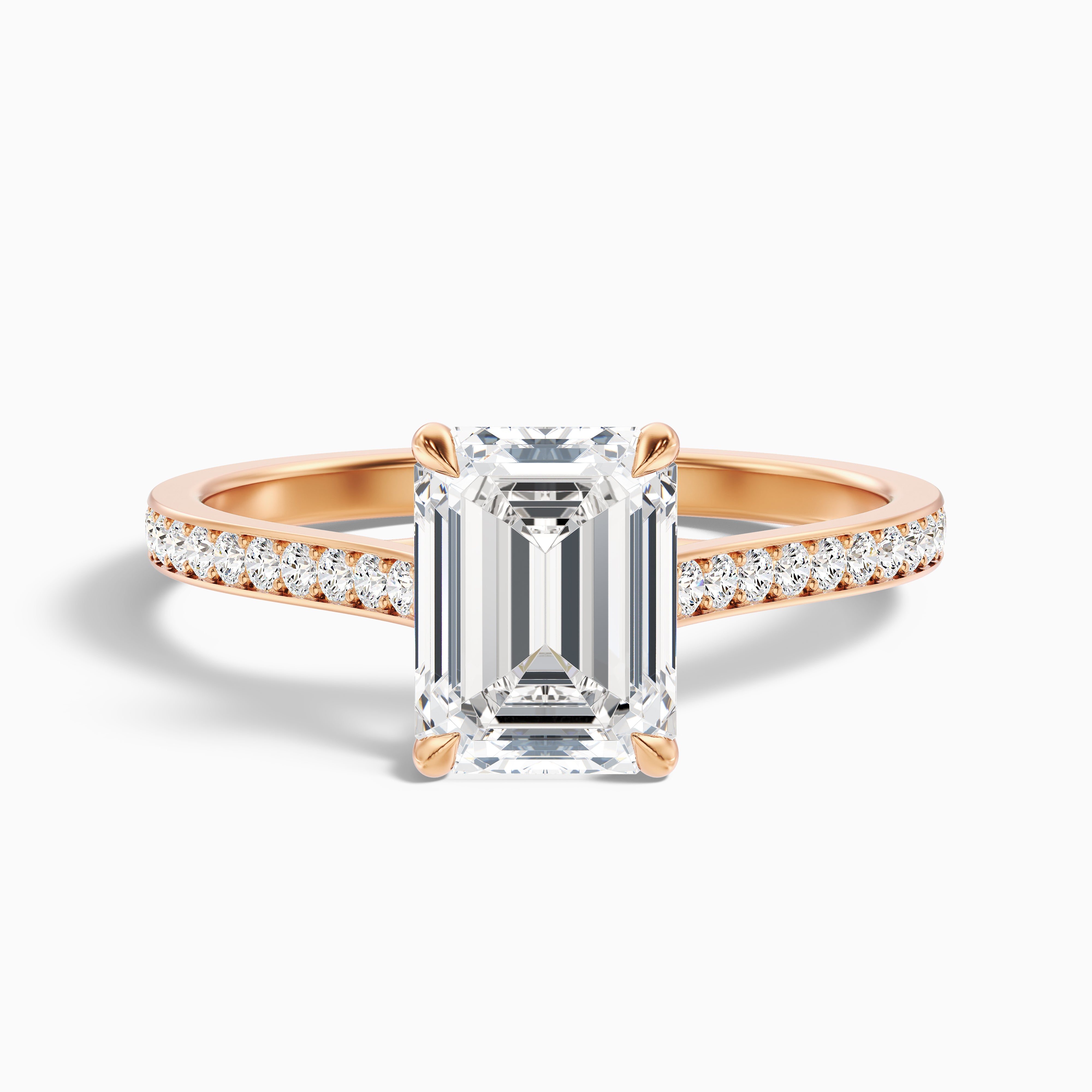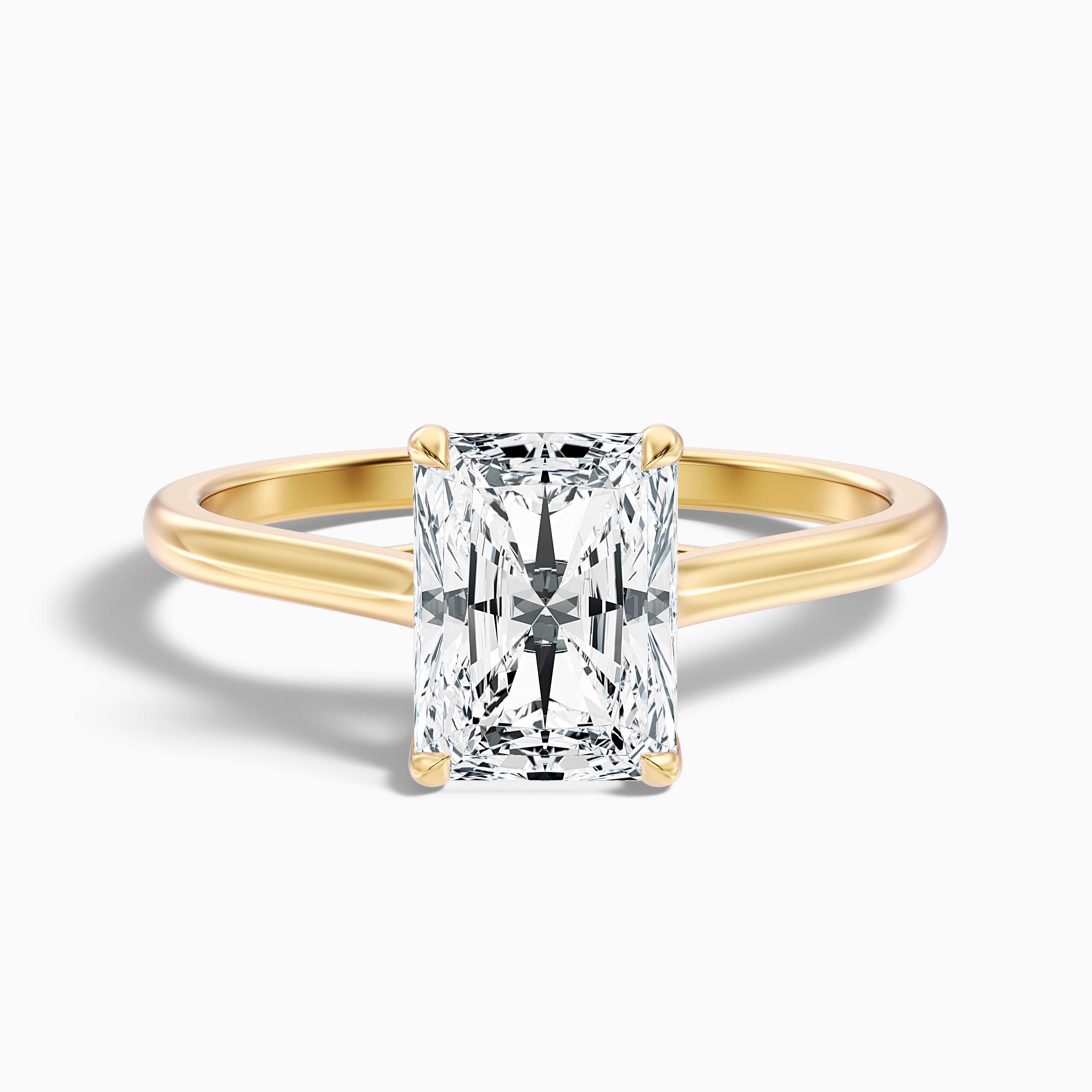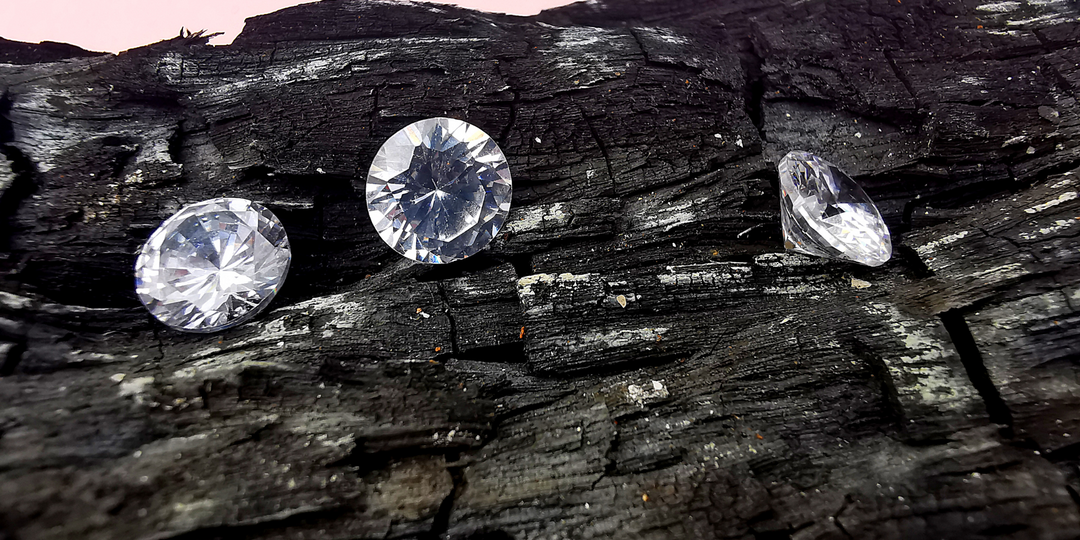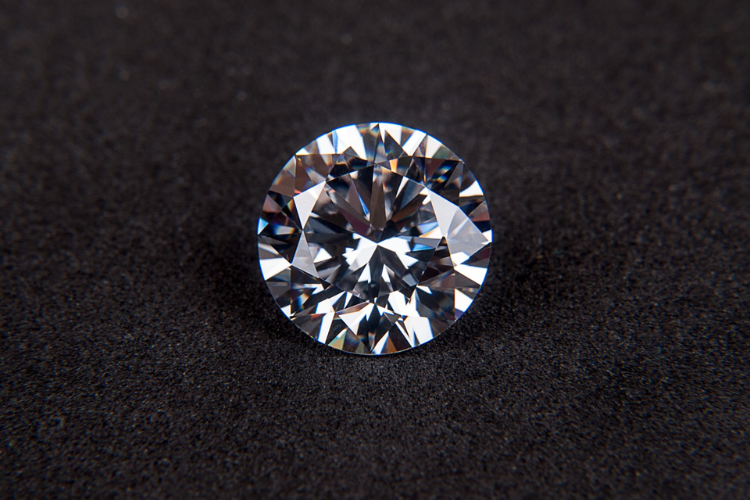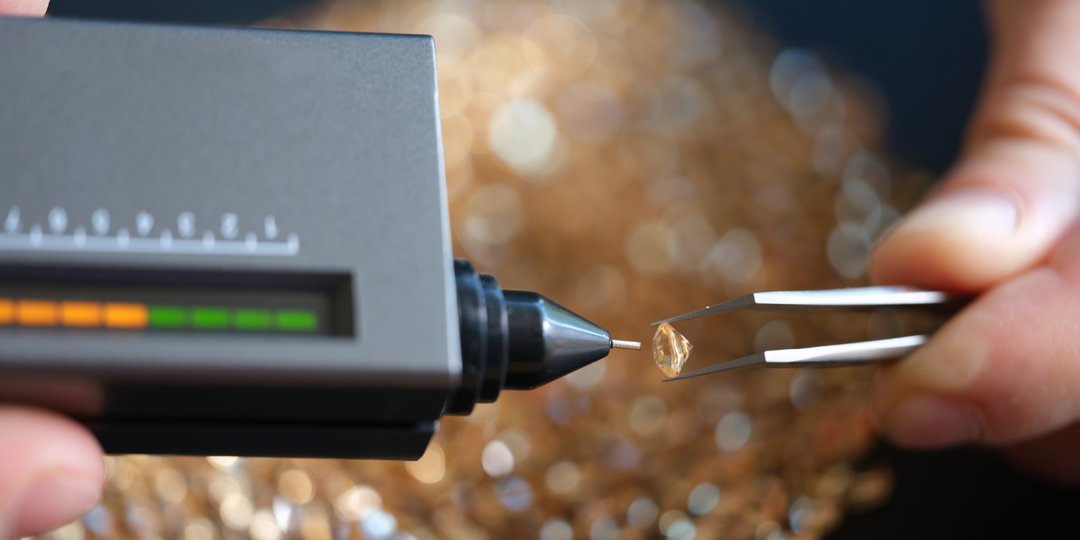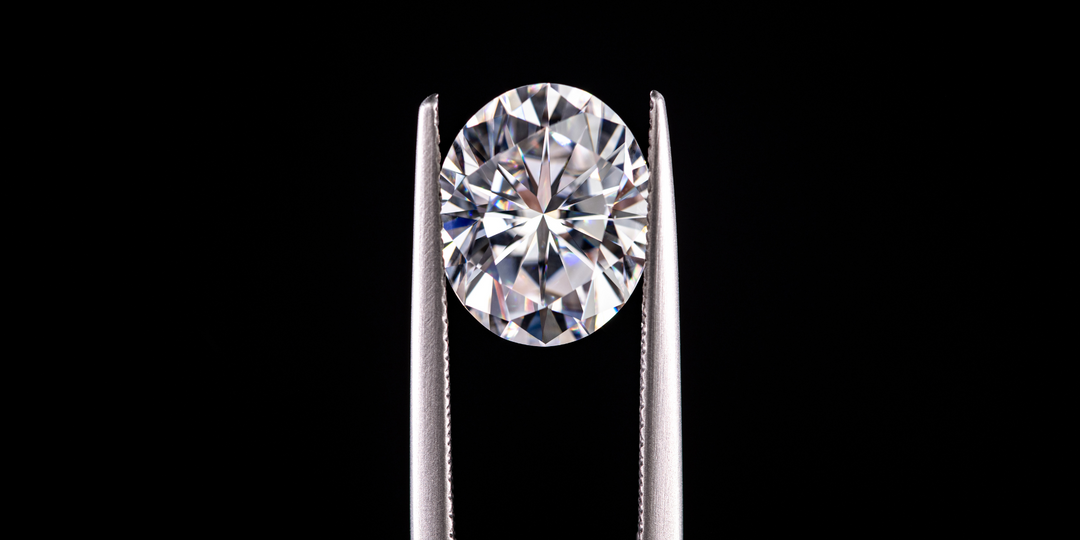How to Clean Your Lab Grown Diamond at Home?
Welcome to your guide on keeping your lab grown diamond as dazzling as the day you got it! Whether you're eco-conscious, a jewelry fan, or just love sparkly things, knowing how to clean your lab grown diamond keeps it looking its best. In this post, we'll dive into easy, gentle ways to care for and clean your diamond at home. Ready to make your lab-created diamond shine as bright as you? Let’s dive in!
How to Take Care of Your Lab Grown Diamond Regularly
Lab-grown diamonds are an excellent choice for those who want an ethical sparkle but like natural diamonds, regular care is vital in keeping them sparkling. Over time dirt, oils from your skin and the general wear and tear of daily life can dull your diamond. This doesn’t mean your diamond is any less valuable or beautiful, it just needs a little love to get it shining again.
Having a routine for cleaning lab grown diamonds will preserve their brilliance and longevity. By dedicating a few minutes a week to their care, you can prevent the build-up of grime and ensure your diamond continues to sparkle just right. Plus, regular cleaning is a great way to check your jewelry for any signs of wear or the setting loosening, which can prevent any accidents.
So there you have it. Consistency is key. Follow these, and your lab grown diamonds will always sparkle.
How to Store Your Lab Grown Diamond
Storing your lab grown diamond properly is just as important as cleaning it regularly. The way you store your diamond jewelry can impact how it looks and how long it lasts. It’s best to keep your diamonds in a dedicated spot where they’re safe from scratches or damage.
Try using a soft pouch or a jewelry box lined with fabric; they’re perfect for keeping your diamonds safe. These storage options shield your pieces from coming into contact with harder materials that might scratch them. Plus, keeping your diamond jewelry separate from other pieces can stop them from rubbing against each other and causing damage.
Investing in a few simple tools can make a big difference in maintaining your diamond’s condition. While the right storage practices might seem like a small detail, they’re super essential for preserving the quality and beauty of your lab grown diamonds.
At CaratBee, we include a soft pouch with every jewelry box, allowing customers to store their diamond rings safely.
Step-by-Step Guide to Cleaning Your Lab Grown Diamond at Home
Cleaning your lab grown diamond doesn't have to be a daunting task. In fact, with a few household items and a little time, you can restore its shine right at home. Follow these simple steps to get started:
1. Mild Soap and Water
Step 1: Gather Your Supplies
Before you begin, make sure you have all the necessary items on hand:
- Hairdryer: Useful for drying and adding extra shine.
- Two Cups for Water: One for soapy water and one for rinsing.
- Towel: To dry your jewelry and catch any drips.
- Soft Toothbrush: Ideal for gently scrubbing delicate surfaces.
- Dish Soap: Effective for creating a gentle cleaning solution.
- Foam Soap: An alternative to soap for direct application.
- Soft Padded Area: To prevent accidents or scratches, avoid working near the sink.
Step 2: Prepare the Cleaning Solution
Start by preparing a cleaning solution. If using dish soap, mix a small amount into one of the cups filled with water. Stir gently to create a mild soapy mix. Alternatively, if you prefer foam soap, you can apply it directly onto the toothbrush or the jewelry itself for immediate use.
Step 3: Gently Scrub Your Jewelry
Once your cleaning solution is ready, it's time to scrub:
- Dip the soft toothbrush into the solution.
- Use gentle, circular motions to scrub your jewelry, paying particular attention to crevices and settings where dirt can accumulate.
- Allow the jewelry to sit in the soapy water for several hours for deeper cleaning, or opt for a quick clean by scrubbing for a shorter period.
- For wedding bands, you can scrub a little more thoroughly, as their diamonds are often larger and more securely set.
Step 4: Rinse and Dry
After cleaning, rinse the jewelry in the second cup filled with fresh water. This step removes any remaining soap residue:
- Ensure you're working on a soft, padded surface to prevent damage.
- Use your hands or a soft cloth to dry the jewelry, avoiding any abrasive materials gently.
Step 5: Add Extra Sparkle
Finish off by giving your jewelry an extra sparkle:
- Use the hairdryer in a low-heat setting. The warm air helps eliminate water spots, enhancing the brilliance of the diamonds.
- Set the jewelry on a soft rubber surface or stabilize it by placing a toothbrush in the center of a ring to keep it steady during drying.
And there you go! Just follow these simple steps, and your diamonds will be sparkling clean and looking as stunning as ever. Enjoy the refreshed brilliance of your precious pieces!
2. White Vinegar
- Mix Up a Solution: Grab a small bowl and mix equal parts of white vinegar and water. Make sure it's deep enough to dunk your jewelry completely.
- Soak Time: Gently drop your diamond jewelry into the mix, ensuring each piece is fully submerged. Let it sit for about 30 minutes to loosen up any gunk or residue.
- Give It a Scrub: After soaking, take a soft brush, like a toothbrush, and gently scrub the jewelry. Focus on the settings and little nooks where dirt tends to hide. Be gentle to avoid scratching.
- Rinse Off: Once you're done scrubbing, rinse the jewelry thoroughly with warm water. Make sure you wash away all the vinegar, since leftover solution can dull the sparkle.
- Dry It Off: Pat the jewelry dry with a soft cloth. Steer clear of paper towels or rough fabrics that might scratch. Now, enjoy the refreshed sparkle of your diamond jewelry!
3. Jewelry Cleaning Solution
- Use a Commercial Cleaner: First off, grab a good jewelry cleaning solution made for diamonds. These are great because they gently clean off dirt and grime without harming the stone or its setting.
- Follow Instructions: Be sure to check out the instructions from the manufacturer for soaking and cleaning. Usually, you'll need to leave your jewelry in the solution for a while to get it really clean.
- Rinse and Dry: Once it's soaked, rinse your jewelry with warm water to wash away any leftover cleaner. Use a gentle stream so you don't knock out any small stones. Finally, dry it off with a lint-free cloth to keep it shiny and fiber-free.
4. Baking Soda Paste
- Prepare a Paste: Start by mixing a bit of baking soda with water in a bowl until you get a thick paste. Make sure it’s not too runny; you want a thicker consistency for better cleaning.
- Apply: Grab a soft-bristled brush, like a toothbrush, and scoop up some of the paste. Gently apply it to the diamond, covering all the surfaces and getting into those little crevices where dirt likes to hide.
- Scrub: Using gentle, circular motions, scrub the diamond and its setting. Focus on the areas around the setting where buildup tends to happen, but be careful not to press too hard to avoid scratches.
- Rinse: After scrubbing, rinse the diamond under warm water. Make sure you wash away all the paste to leave the diamond sparkling clean.
- Dry: Once rinsed, use a soft, lint-free cloth to pat the diamond dry. Just make sure the cloth is clean to avoid leaving any dust or lint on the diamond.
Also Read
Tips for Maintaining Your Lab Grown Diamonds Shine
Regular Cleaning:
- How Often: Aim to clean your lab grown diamonds once a week, maybe more if you wear them a lot or get them dirty.
- How to Clean: Just grab a soft toothbrush and some mild detergent, give them a gentle scrub, rinse well with warm water, and dry with a lint-free cloth. For a deeper cleaning, try a professional diamond cleaning solution.
Avoiding Harsh Chemicals and Abrasives:
- Chemicals to Avoid: Steer clear of harsh stuff like chlorine, bleach, or certain jewelry cleaners—they can mess up your diamonds.
- Materials to Avoid: Keep those abrasive materials like steel wool far away—they'll scratch your gems.
Proper Storage:
- Where to Keep Them: Use a soft pouch or a jewelry box to store your lab grown diamonds so they don't scratch or rub against other pieces.
- Keep Them Separate: If you can, store them separately from other gemstones. Harder stones can scratch the softer ones.
Extra Tips:
- Take Them Off: It's smart to remove your diamond jewelry before doing anything rough, like sports or cleaning, just to keep them safe.
- Get Them Professionally Cleaned: If they start looking a little dull, consider taking them to a jeweler for a professional cleaning.
Common Mistakes to Avoid When Cleaning Your Lab Grown Diamond
- Avoid using bleach or strong chemicals. These can harm your diamond and dull its shine. Stick with mild soap and warm water instead.
- Don't brush too hard or use abrasive brushes. You risk scratching the diamond. Opt for a soft-bristled toothbrush or a microfiber cloth.
- Watch out for cleaning over an open drain. Dropping your diamond in there could make it hard to get back. Clean it over a sink or a bowl instead.
Here are some extra tips for cleaning your lab grown diamond:
- Let your diamond soak in warm water for a few minutes beforehand.
- Gently scrub it with a soft-bristled toothbrush or a microfiber cloth.
- Rinse it well with warm water.
- Dry it off with a soft cloth.
- Consider having a professional cleaning done every six months.
When to Seek Professional Cleaning Services
Sometimes a diamond may need professional cleaning. Here are the signs:
First, if you see deep scratches or grime that won’t come out with regular cleaning, it’s time to go to a pro. They have the tools and expertise to handle the tough stuff.
Second, regular maintenance is key to long-term care. Professional cleanings can include inspections to make sure your diamond setting is secure and stable.
Lastly, ultrasonic cleaning is a service many jewelers offer. This uses high-frequency sound waves to remove the toughest dirt that can’t be done at home.
Conclusion
Maintaining the brilliance of your lab grown diamond doesn't have to be a chore. With the right techniques and a bit of dedication, your diamond can continue to shine like new. By following the steps outlined in this guide, you'll be well-equipped to care for and clean your diamond at home. And remember, for those times when your diamond needs a little extra attention, professional cleaning services are always an option. Keep your diamond sparkling, and enjoy the beauty it brings to your life every day!



